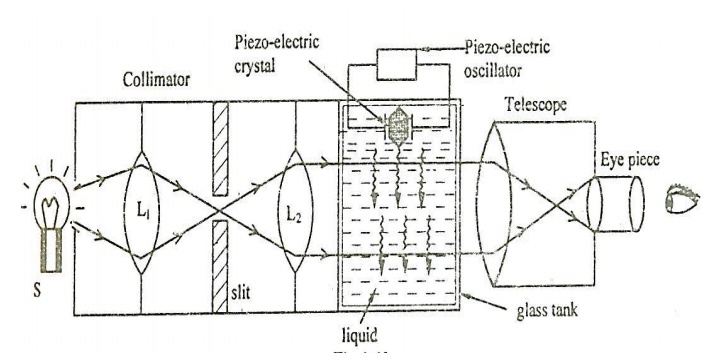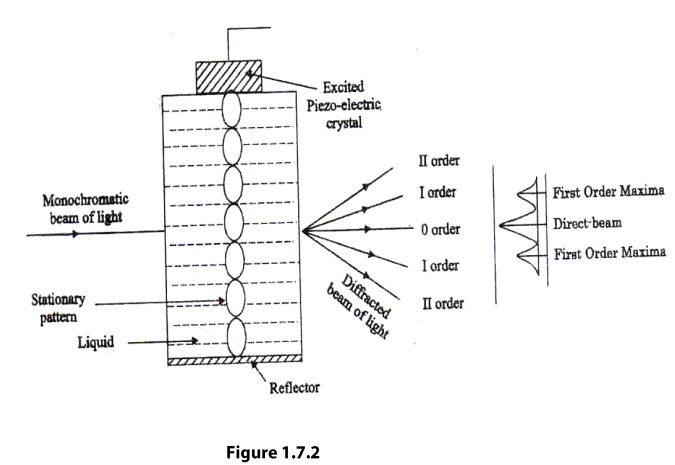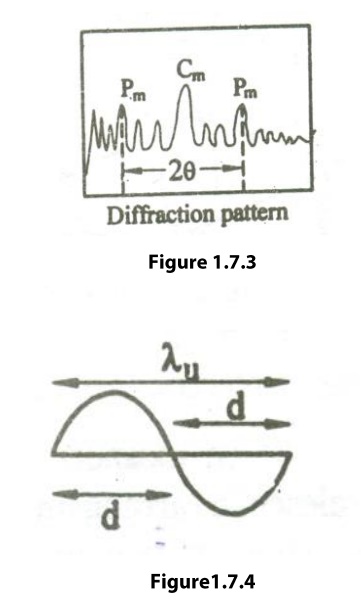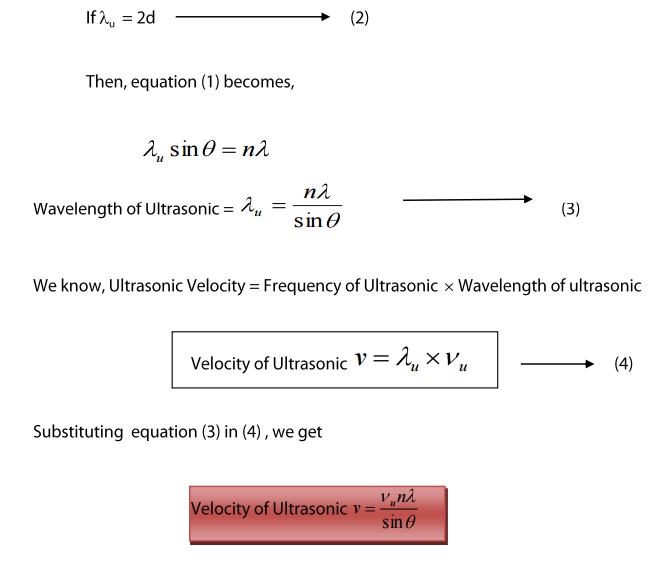Chapter: Physics : Acoustics and Ultrasonics
Determination of Ultrasonic Velocity in Liquid(Acoustical Grating Method): Principle, Construction and working

Determination
of Ultrasonic Velocity in Liquid (Acoustical Grating Method)
Principle:
When ultrasonic waves travel through a
transparent liquid, due to alternate compression and rareaction, longitudinal
stationery waves are produced. If monochromatic light is passed through the
liquid perpendicular to these waves, the liquid behaves as diffraction grating.
Such a grating is known as Acoustic Grating. Here the lines of compression and
rareaction act as transparent light waves. It is used to find wavelength and
velocity(v) of ultrasonic waves in the liquid.
Construction;
It is consists of a glass tank, filled
with the liquid. A piezo-electric (Quartz) is fixed at the bottom of the glass
tank and is connected with piezo-electric oscillatory circuit as shown in the
figure 1.7.

An incandescent lamp is used as a
monochromatic source (S) and a telescope arrangement is used to view the
diffraction pattern. A collimator consisting of two lenses L1 and L2 is used to
ocus the light effectively in the glass tank.

Working
(i) When the piezo-electric crystal is
kept at rest:
Initially the piezo-electric crystal is
kept at rest and the monochromatic at light is switched ON. When the light is
focused in the glass tank filled with the liquid, a single image, a vertical
peak is observed in telescope. i.e., there is no diffraction.
(ii) When the piezo-electric crystal is
set into vibrations:
Now the crystal is put into vibrations
using piezo-electric oscillatory circuit. At Resonance, Ultrasonic waves are
produced and are passed through the liquid. These Ultrasonic waves are
reflected by the walls of the glass tank and form a stationery wave pattern
with nodes and antinodes in the liquid. At nodes the density of the liquid
becomes more and at antinodes the density o the liquid becomes less. Thus, the
liquid behaves as a directing element called acoustical grating element.
Now when the monochromatic light is
passed the light gets directed and a diffraction pattern consisting of central
maxima and principle maxima on either side is viewed through the telescope as
shown in figure 1.7.2 as well as in 1.7.3.

Calculation
of Ultrasonic Velocity
The velocity of Ultrasonic waves can be
determined using the condition.


Thus, this method is useul in measuring
the wavelength and velocity of ultrasonic waves in liquids and gases at various
temperatures.
Related Topics